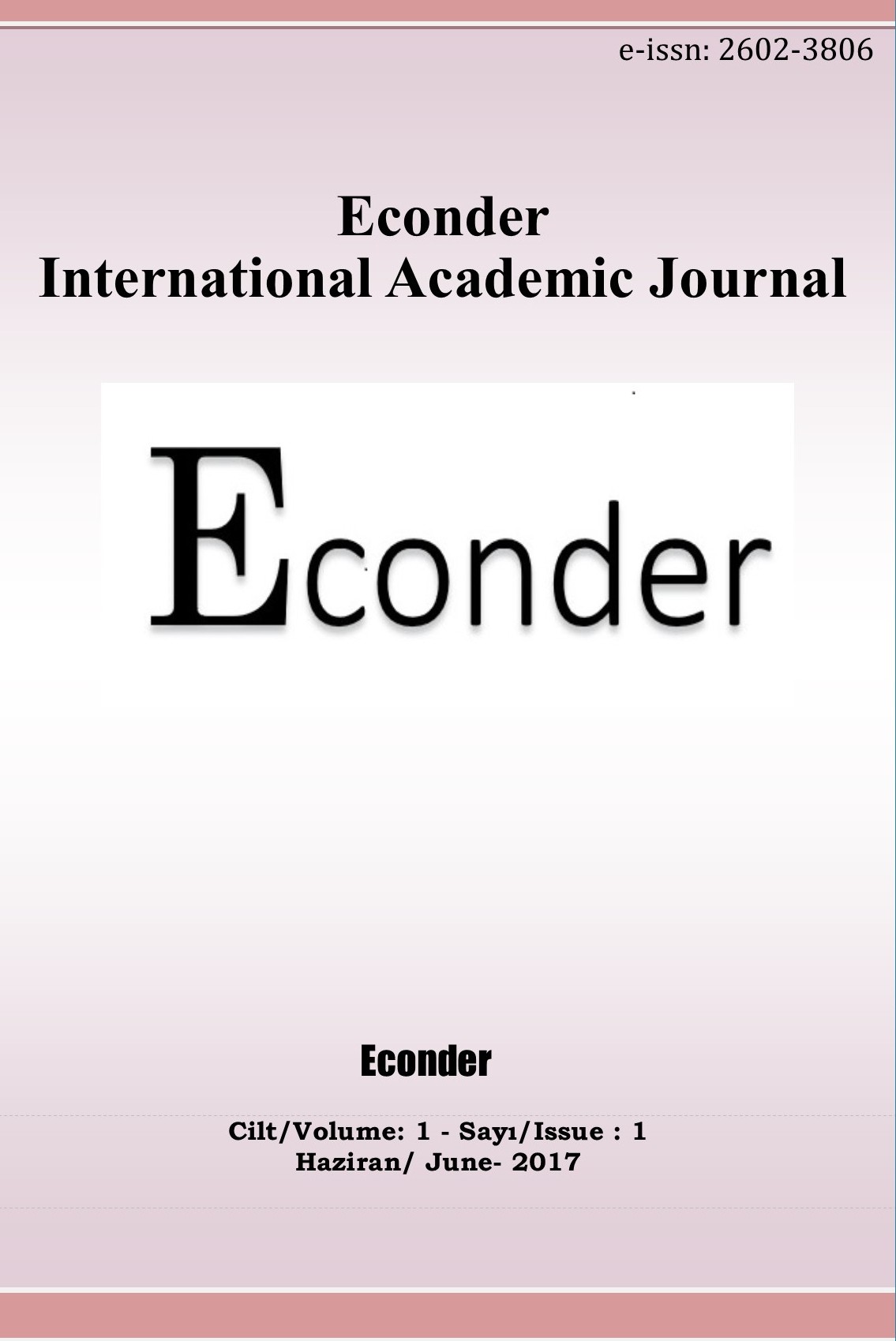Orta Asyada İslami Bankacıllığın Gelişimi ve Ekonomik Büyüme İişkisi: Kazakistan Örneğinde Nedensellik Analizi
Ekonomik Büyüme, Finansal Gelişme, İslami Bankacılık Augmented Dickey-Fuller Testi (ADF), Toda-Yamamoto Yaklaşımı, Nedensellik Analizi
The Relationship Between Islamic Banking Development and Economic Growth in Central Asia: Causality Analysis In a Case of Kazakhstan
Economic Growth, Financial Development, Islamic Banking, Toda-Yamamoto Approach, Causality Analysis.,
___
- Abramovitz, M. (1986). Catching up, forging ahead, and falling behind. The journal of economic history.46(2),(385-406p).
- Aydın, M. K., Ak, M. Z., & Altıntaş, N. (2014). finansal gelişme’nin büyüme’ye etkisi: Türkiye özelinde nedensellik analizi. Maliye Dergisi, 167, 149-162.
- Bayat, T., Tas, S., & Tasar, I. (2017). Energy consumption is a determinant of economic growth in BRICS countries or not. Asian Economic and Financial Review, 7(8), 823-835.
- Bozkurt, M., Altıntaş, N., & Yardımcıoğlu, F. (2020). Katılım bankacılığı ve konvansiyonel bankacılığın ekonomik büyüme üzerindeki etkileri: türkiye üzerine bir inceleme. International Journal of Islamic Economics and Finance Studies, 6(1), 95-114.
- Caporale, G. M., & Helmi, M. H. (2018). Islamic banking, credit, and economic growth: Some empirical evidence. International Journal of Finance & Economics, 23(4), 456-477.
- David M Gould, Roy J Ruffin (1993/4/1). What Determines Economic Growth? Economic review journal. 2, (25–40p).
- Furqani, H., & Mulyany, R. (2009). Islamic banking and economic growth: Empirical evidence from Malaysia. Journal of Economic Cooperation & Development, 30(2).
- Gündüz, M., & Özyıldırım, Y. (2020). Does Financial Development Lead to Employment and Growth?: A Frequency Domain Causality Test for G7. In Social, Economic, and Environmental Impacts Between Sustainable Financial Systems and Financial Markets (pp. 1-20). IGI Global.
- J.Barro, R. (1991). Economic Growth in a Cross Section of Countries. The Quarterly Journal of Economic. 106, 2, (407–44p).
- Kazakistan merkez bankası. (2021). (https://nationalbank.kz/kzswitch=russian) .
- Kose, Prasad, Rogoff, Jin Wei. (2010). Financial Globalization and Economic Policies. Handbook of Development Economics. 5, ( 4283-4359p).
- M. Aziakpono.(2013). Financial integration and economic growth : theory and a survey of evidence. Journal for Studies in Economics and Econometrics37(3): (61-86p).
- Mensi, W., Hammoudeh, S., Tiwari, A. K., & Al-Yahyaee, K. H. (2019). Impact of Islamic banking development and major macroeconomic variables on economic growth for Islamic countries: Evidence from panel smooth transition models. Economic Systems, 100739.
- Niels Hermes, R. L. (1996). Financial Development and Economic Growth. 1st edition. Economics, Finance, Business & Industry (250-265p).
- Schwab, P. K. (2012). World Economic Forum. (Geneva). Columbia University. The Global Competitiveness Report 2012–20013: Full Data the framework of The Global Benchmarking Network.(32-34p).
- Statik BDT Komitesi. (2019) (https://www.gov.kz/memleket/entities/statlang=r)
- Kazakistan Cumhuriyeti Stratejik Planlama ve Reformlar Ajansı Ulusal İstatistik Bürosu.
- Toda, H. Y., & Yamamoto, T. (1995). Statistical inference in vector autoregressions with possibly integrated processes. Journal of econometrics, 66(1-2), 225-250.
- Y.Demirdöğen, F.Kaplan (2020). The Relationship between Participation Funds and Macroeconomic Variables; SVAR Analysis Approach Turkish Journal of Islamic Economics (TUJISE) 7 (2), 126-143.
- Yayın Aralığı: Yılda 2 Sayı
- Başlangıç: 2017
- Yayıncı: Hayrettin KESGİNGÖZ
Örgütsel Erdemlilik Algısı: Karabük Üniversitesi Örneği
Abdullah KARAKAYA, Nuray DORUKBAŞI, Cihan KARA
Bankacılık Dağıtım Kanallarının Kayıt Dışı Ekonomiye Etkisi
Döviz Kurlarındaki Değişimin Turizm Sektörü Üzerindeki Etkisi; Türkiye Örneği
Melih MESTANOĞLU, Hasan Hüseyin YILDIRIM
İçsel Motivastonun İşe Adamışlık Üzerindeki Etkisinde İş Becerikliliğinin Aracı Rolü
İslâm Ekonomisi’nde Kalite: Kur’an Penceresinden Bir İnceleme
Covid 19 Pandemisinin Ekonomik Göstergeler Üzerindeki Etkileri: Yapısal Kırılmalı Birim Kök Analizi
M. Said CEYHAN, Ahmet KAMACI, Mehmet Akif PEÇE
ISIC REV.4 Mal Sınıflamasına Göre Türkiye’nin Dış Ticaretinin Kur Esnekliği
Çetin POLAT, Kadir Özgür PEKER
Türkiye'de Dolarizasyonun Belirleyicileri: Ekonometrik Bir Analiz
